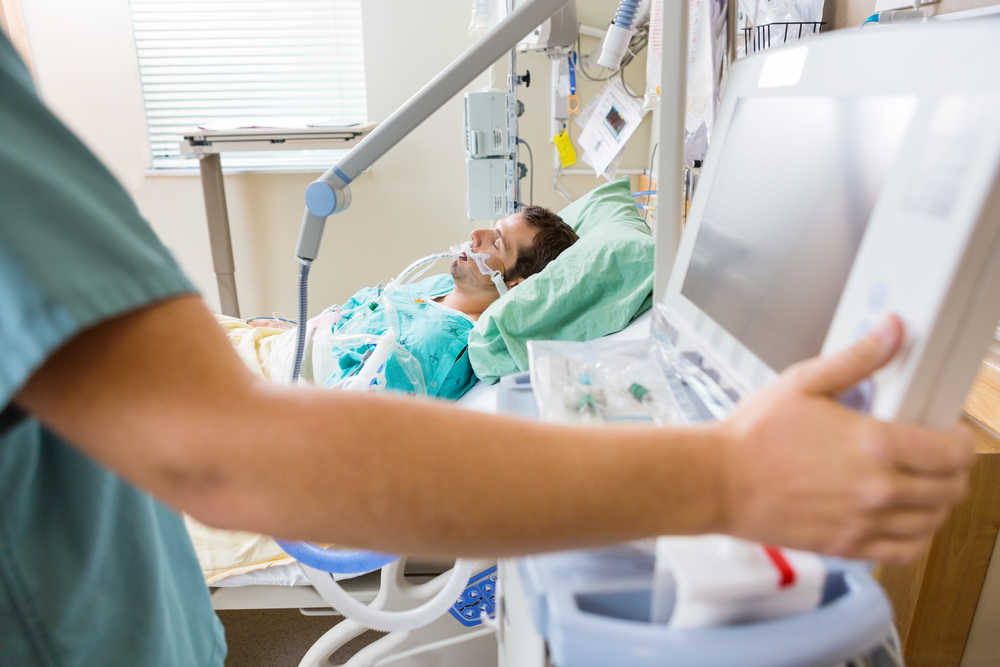ECMO for Severe ARDS and the EOLIA Trial: A promise not fulfilled

ECMO for Severe ARDS and the EOLIA Trial
EJRC Article Review
Undoubtedly, in the management of severe Acute Respiratory Distress Syndrome (ARDS) one of the most criticised and controversial therapies in recent years is Extra-Corporeal Membrane Oxygenation (ECMO). After several failed clinical trials, those who support the use of this therapy have taken refuge in the encouraging results of the CESAR Trial[1]. However, this trial presented many methodological weaknesses and heterogeneity in the management of ARDS, which questioned the reproducibility of its results. To fill the gaps in the scientific evidence regarding this controversial topic, a trial was designed to specifically address the weaknesses of previous research. The EOLIA Trial[2] was widely considered “the great promise” to provide clinicians with the scientific evidence to support the routine use of ECMO therapy in cases of severe ARDS.
In this highly anticipated international trial, patients with severe ARDS were randomised to an intervention group with early ECMO (n =124), together with ultraprotective mechanical ventilation or to receive conventional treatment (n =125) with protective mechanical ventilation and other therapeutic measures, including inhaled nitric oxide, prone positioning (PP), high-frequency oscillatory ventilation, and intravenous Almitrine. In addition, crossover to ECMO for patients in the control group was allowed if the patient had refractory hypoxaemia despite the use of adjunctive therapies and if the treating physician thought that the patient had no irreversible multiorgan failure and that ECMO might change the outcome.
After the inclusion of 240 patients, a fourth planned sequential interim analysis showed no significant between-group difference in mortality at 60 days, and therefore trial recruitment was stopped, in accordance with the pre-specified rules.
Among the results of the trial, regarding the primary objective, mortality at 60 days in the ECMO group was 35%, compared to 46% in the control group (RR, 0.76, 95% CI, 0.55-1.04; =0.09). A total of 35 patients (28%) in the control group received rescue ECMO therapy for refractory hypoxaemia. It is worth noting that the crossover patients were sicker at the time of enrolment than other patients in the control group, since they had lower respiratory system compliance, and higher plateau and driving pressures. Mortality at 60 days in patients crossed to the ECMO treatment arm was 57% versus 41% among the other patients in the control group. Regarding these results, we must consider the following important aspects:
- Prone positioning: In the treatment protocol, the establishment of prone positioning (PP) was not included as a standard of management in both groups. At randomisation, PP was applied to 56% of the patients in the ECMO group and 62% in the control group. After randomisation, things improved in the control group, where 90% of the patients received PP, whereas only 66% of the patients in the ECMO group underwent this strategy. PP is a proven, safe and feasible therapeutic manoeuvre, which might have diminished the need for ECMO in these patients[3]. Moreover, Schmidt et al. [4] found that the non-use of PP prior to the onset of ECMO was associated with higher mortality (Odds ratio 2.93 (P = 0.043) Thus, although this is likely to have influenced the results, we cannot reach a solid conclusion about it.
- Statistical power: The calculated sample size of each arm wasn’t met for a statistical power of 80% (331 patients assigned to each group). Nevertheless, a reduction in global mortality of 11% (35% versus 46%) was found. Although the differences were not statistically significant, it is likely that the trial didn’t have adequate statistical power to detect differences in mortality between the two groups
- Crossover effect: The crossover effect in the trial, which ended up being high (28%), could have significantly influenced the results. The analysis of unadjusted global survival for crossover could underestimate the true therapeutic effect of ECMO. In conclusion, due to the multiple biases and limitations in the study design, the results can be considered inconclusive. It is necessary for investigators to conduct a post hoc analysis to elucidate the remaining doubts and examine other data that perhaps have not been analysed.
Key messages
- Mechanical ventilation must be optimised in every patient with ARDS, following contemporary recommendations.
- Conventional strategies should be exhausted prior to considering the use of other rescue therapies.
- Prior to considering the use of ECMO therapy, prone positioning must be implemented, unless there are contraindications.
- When ECMO therapy is indicated, patients should be transferred to a highly specialised centre whenever possible.
This article review was prepared by EJRC Member Aaron Blandino Ortiz (Intensive Care Medicine Santa Barbara Hospital, Puertollano (Ciudad Real) Spain; Intensive Care Medicine and ECMO Team Ramón y Cajal University Hospital, Madrid, Spain) with contributions from Ricard Ferrer Roca (Head of Department Intensive Care Medicine, and ECMO Team Vall d’Hebron University Hospital, Barcelona, Spain) and Raúl de Pablo Sánchez (Head of Department Intensive Care Medicine, and ECMO Team, Ramón y Cajal University Hospital, Madrid, Spain).
References
- Peek GJ, Clemens F, Elbourne D, et al. CESAR: conventional ventilatory support vs extracorporeal membrane oxygenation for severe adult respiratory failure. BMC Health Serv Res 2006;6: 163.
- Combes A, Hajage D, Capellier G, et al. Extracorporeal membrane oxygenation for severe acute respiratory distress syndrome. N Engl J Med 2018;378:1965-75.
- Guérin C, Reignier J, Richard JC, et al. Prone positioning in severe acute respiratory distress syndrome. N Engl J Med 2013;368:2159-68.
- Schmidt M., Zogheib E., Rosé H., et al. The PRESERVE mortality risk score and analysis of long-term outcomes after extracorporeal membrane oxygenation for severe acute respiratory distress syndrome. Intensive Care Medicine. 2013;39(10):1704–1713.